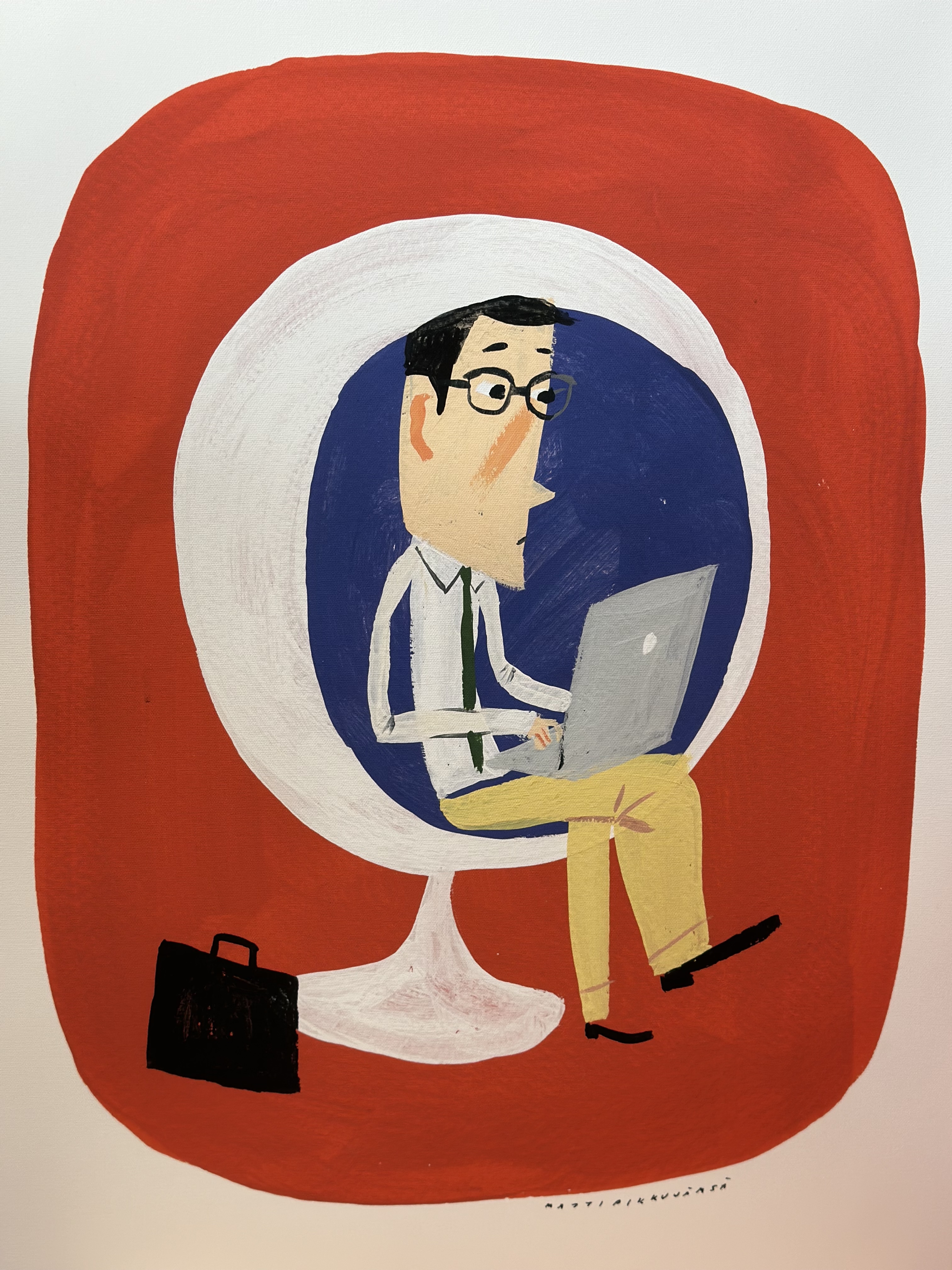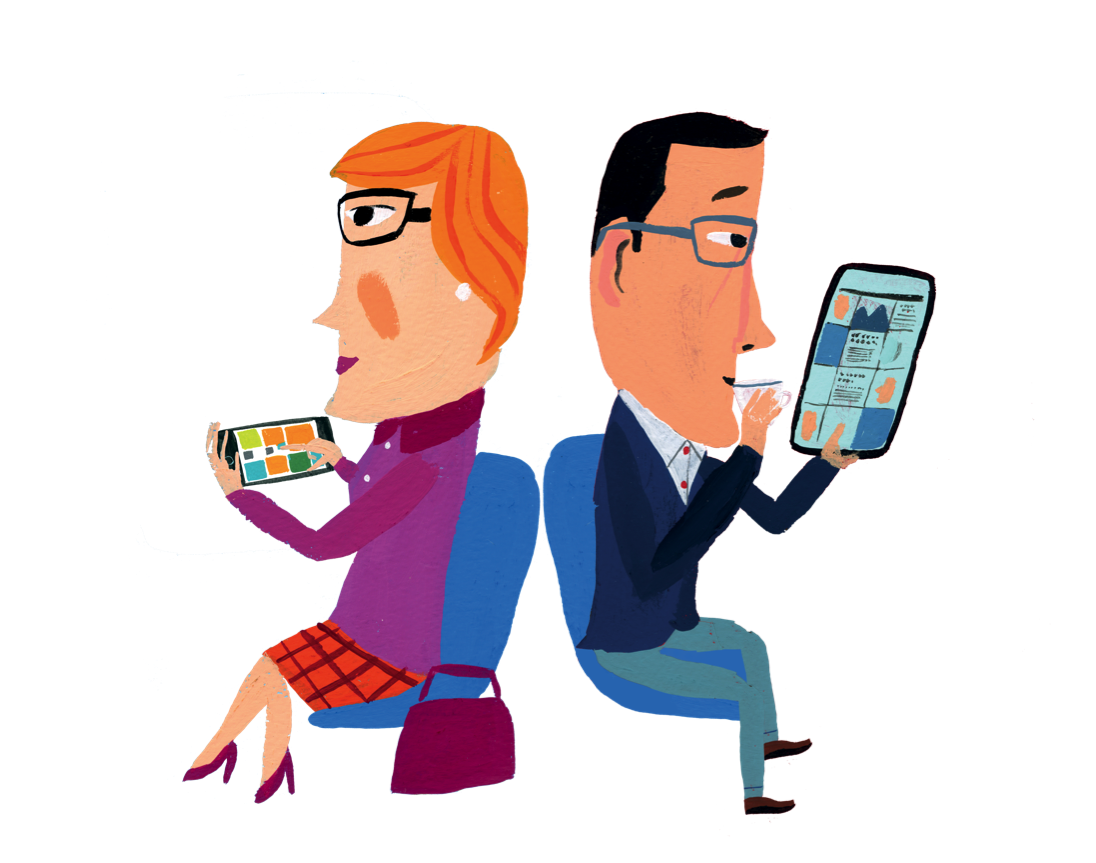Programmatic advertising 2020 – what to expect?
The online industry and sphere for online ads have developed tremendously in


The online industry and sphere for online ads have developed tremendously in the past two decades. Programmatic advertising never seems to go out of fashion, rather the opposite, the topic is hotter than ever.
The first banner ad was published by Wired in 1994 and let’s just say a lot has happened since then. The past 10 years have been very crucial not only for the development of programmatic advertising but for the whole industry of online advertising. Today there are thousands and thousands of players in the field, some working on the publisher side, some on the demand side and some in-between. Due to the extreme growth of websites and website users, different social platforms and media format, the ad landscape has developed at a very rapid pace during the past years. Previously, programmatic was something only large companies and media agencies could afford, but growth and technological development have made it possible for players of all sizes to utilize programmatic, and monetize their sites in the most effective way
Some may say the industry has developed a bit too fast, and the question of cybersecurity and privacy has been and never-ending topic since GDPR became effective in 2018. After this, there has been a long list of actions taken to secure the privacy of data (and make the life hard for those trying to keep up in the programmatic scene). The industry seems to be changing shape every quarter and new protocols and legislation seems to be implemented continuously.
This leads us onto today’s topic, what’s in the future of programmatic advertising the upcoming year and how can we predict and prepare for the next decade to come? We will also touch how the unexpected Coronavirus is affecting the industry short- and long-term.
What to expect in 2020?
Budget
Already in 2018, 80% of digital marketing was done through programmatic advertising. Last year US advertisers spent nearly $60 billion on programmatic display ads. The estimate is that by 2021 the same number will be $81 billion, meaning that nearly 88% of all digital ads will be transacted programmatically. According to IAB programmatic accounts for 85% of the U.S media buying in 2020, and the number is estimated to grow. Everything seems to be in favor of a continuously growing budget for programmatic in the upcoming decade.
New Media Formats
Having had it’s glory time on website browsers, mobiles and tablets for a good time now, programmatic is starting to take over more traditional marketing platforms. We can already see programmatic advertising in streaming services and connected TV. New methods are being used to make ads less disturbing. For instance, pause ads, and binge ads are far more attention-grabbing than an unwanted break in your tv show just when things started to get exciting.
Another big thing in 2020 will be the growth of programmatic in audio. Music streaming services have been around for a while but podcasts, audiobook streaming services, and voice-controlled platforms are gaining in popularity at a rapid pace and programmatic audio is expected to continue to have explosive growth in the upcoming decade. By allocating budget to try new, non-traditional programmatic channels you will be ahead of the competition that will come, sooner or later.
Increased Privacy Regulations
Yes, this will continue to influence the market of programmatic and publishers as well as advertisers will have to cope with the industry standards and change their data storing strategies and be prepared for whatever is thrown at them. The ongoing discussions and speculations about a cookieless future seem to be the topic of this year (before Corona came to time at least). Safari and Firefox have been blocking the use of third-party data for a while and recently Google jumped along with its popular web browser Chrome. Advertisers need to implement a strategy where they can succeed without relying on consumer data.
Native Ads and user-friendly ad experiences
Although the primary aim probably never has been to disturb users with ads, there was a time when ads were, honestly, very much disturbing the user experience. Pop-up ads and interstitials have had their glory time, and they are not effective anymore, as today’s website users aren’t drawn to popping or disturbing ads. The new era is to adapt quality before quantity. At Kiosked we have noticed how small, better-positioned ads perform better in terms of publishers’ earnings compared to larger, poorly positioned and disturbing ads.
It’s expected to see a rise in native ads in the upcoming years. As native ads are contextual, they are not dependant on customer data and therefore compliant with GDPR, CCPA and fits well into a cookieless future. Native ads are also a lot less disturbing according to website users, as they often melt into the context and are coherent with the topic.
Unexpected scenarios: Coronavirus

While you can say it’s ‘glory time’ for news sites, the situation with COVID-19 is severe and nobody can at this point estimate the outcome of the virus. Although we might be able to stop the virus from spreading further, we don’t have insight into how long this will take and how severely this will impact the world economy. This week the stock market experienced its worst week since the economic crisis of 2008 and oil prices are lower than ever. How will the Coronavirus and its consequences affect the digital advertising industry? Our CEO Antti Pasila is sharing his thoughts on the topic below.
It’s important to understand that advertising spend is heavily connected to the overall economic situation and the general market performance. It might be a bit too early to say, but it looks like the economic effects of COVID-19 are very different from past similar “pandemics”. During the swine flu, the stock market grew (on a 12 month period) over 30% and with SARS the effects were similar. Timespan (how long will it last) is always a key player in these predictions and COVID-19 actually plays an even more important role. The longer this pandemic lasts, the tougher it’s going to get – exponentially. Why? Because we are sitting in a domino effect situation: It starts by willing or unwilling constraint of consumption, which quickly starts hurting businesses. Companies need to start saving money which leads to cutting business costs and layoffs which quickly spirals into a chain reaction. We live in a consumption focused and over-leveraged world where the average Joe has very little or no money stowed away for a rainy day – and that’s a huge problem. I don’t want to sound like a fearmonger, but the ingredients for a global economic crisis are now very present.
So how does this affect the advertising industry?
Short answer – everything is connected to the performance of the general market. If the economy goes down, marketing spends will follow.
The longer answer – the good news is that the Coronavirus is keeping millions of people at home. This means we can expect ad supply/inventory to grow – as people will consume more digital content (apps, websites, games, movies). This typically would indicate that ad prices, CPM’s, will go down. This is great for advertisers as lower CPM typically means better ROAS (return on ad spend) and hence helps them boost their businesses. The fact that multiple industries are in a “forced lockdown mode” (e.g. travel being restricted, China’s fairly long factory shutdown has postponed manufacturing for western brands) means they aren’t spending money on ads either. Luckily there are other industries that are finding more demand for their business and therefore growing their ad spend (home delivery services, gaming, digital entertainment).
Cheaper inventory allows brands also to invest in “supply quality” – they get more bang for their buck and can be pickier about what inventory they buy. The reigning supply-side strategy has for a long time been focused on quantity instead of quality, but now there’s room for strategic differentiation and it will be interesting to see how brands utilize this opportunity.
The year 2020 is a big advertising year. We have “high ad spend events” like the Olympics, US elections, European Championships in football just to name a few and it’s going to be interesting to see what happens if some of the events get postponed. Typically it would just mean that the spend will materialize later but often these things have led to decreased gross spend. It’s almost impossible to predict with so many moving variables.
We can all agree on the fact that programmatic is the future of advertising, it will change and evolve, but it’s for sure here to stay. To sum up the expectations for 2020 – it looks pretty clear that the industry won’t hit its 2020 targets (set last year), but will we miss them by 1 or 15%, only time will tell.
If you are looking for a website monetization partner, Kiosked is here to help. Reach out to us or get started immediately by signing up.


